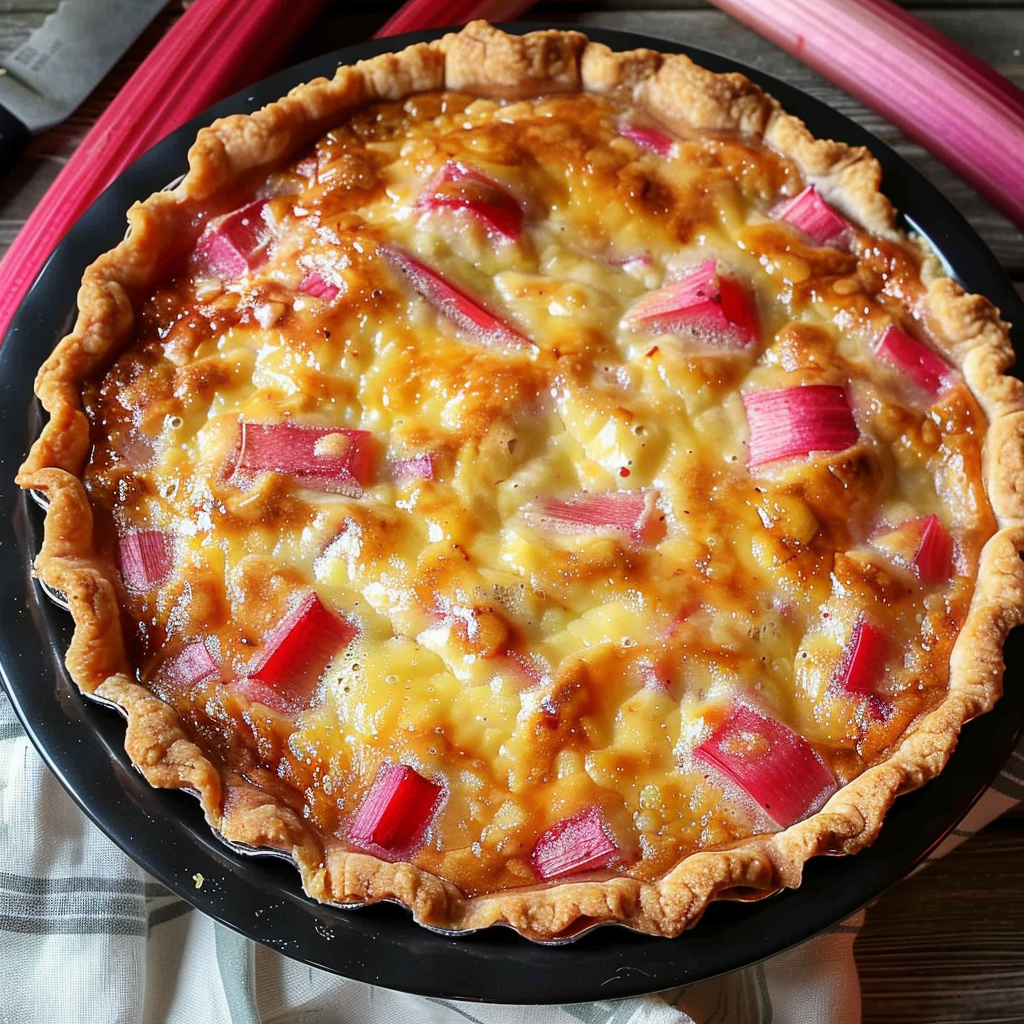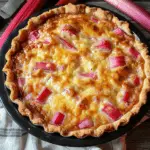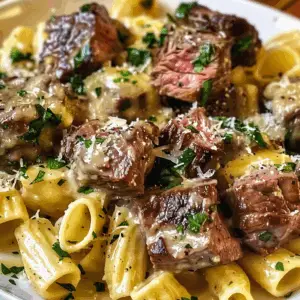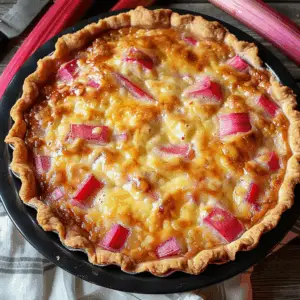The Charm of Rhubarb Desserts
Rhubarb has long held a special place in the hearts of spring and summer bakers. With its signature tart flavor and vibrant red stalks, it brings a bold twist to classic sweets. When paired with a smooth, creamy custard, it transforms into a nostalgic dessert that is both refreshing and comforting. Whether you’ve grown up eating rhubarb pie or are new to baking with this vegetable-turned-dessert-star, there’s something uniquely satisfying about its balance of sweet and sour.
What sets this crustless rhubarb custard pie apart is its simplicity. Unlike traditional pies that require rolling out pastry dough, this version comes together in just one bowl and forms its own tender base as it bakes. It’s an ideal recipe for those who love fuss-free, farmhouse-style desserts that deliver big on flavor.
For those unfamiliar, rhubarb is technically a vegetable, though it’s commonly treated as a fruit in baking. Learn more about its characteristics from Wikipedia’s page on rhubarb, which explores its culinary and botanical origins. You’ll often see it pop up in spring dessert recipes on Pinterest, especially in pies, crisps, and compotes.
As you explore this rhubarb recipes guide, you’ll find a reliable method for making a crustless custard pie using just a few pantry staples. You’ll also learn tips, variations, and serving ideas to help this dish become a go-to favorite in your seasonal baking rotation. If you’re curious about where this dessert fits into the wider world of baked goods, check out the Wikipedia page on pies, which showcases global pie styles from sweet to savory.
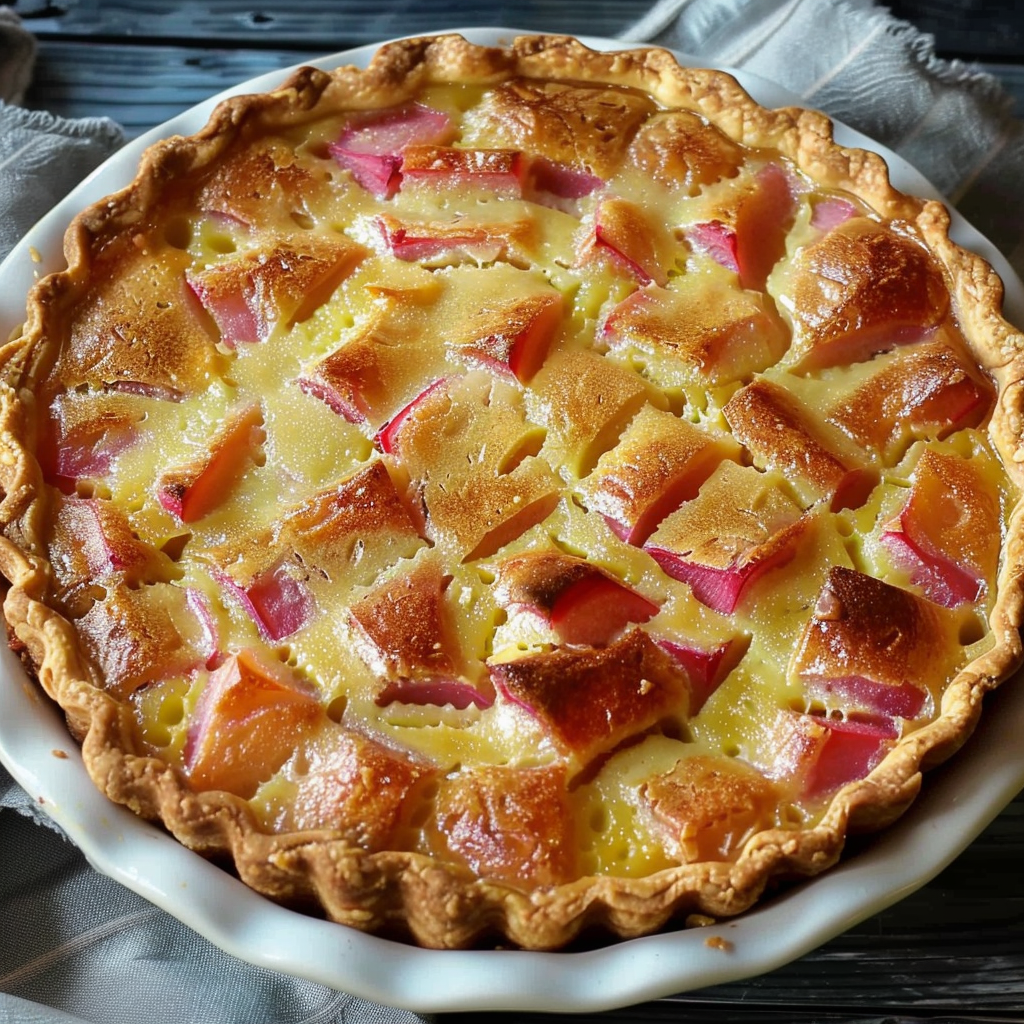
What is Rhubarb? A Quick Culinary Guide
Despite its frequent use in desserts, rhubarb is technically a vegetable, though it’s most commonly treated like a fruit in the kitchen. Its long, celery-like stalks come in shades of pink, red, and green, but it’s the stalks — not the leaves — that are edible. The leaves contain oxalic acid and are toxic if consumed, so always trim and discard them before use.
Rhubarb’s flavor is its most distinctive feature: tart, sharp, and almost lemony. Because of this, it’s typically paired with sugar or naturally sweet ingredients like custard, strawberries, or vanilla. In desserts such as rhubarb custard pie, its acidity helps to cut through the richness, creating a balanced and refreshing bite.
Rhubarb is in season from April through June, though in some regions it extends into July. During these months, you’ll find fresh stalks at farmers’ markets or grocery stores. For those baking outside the season, frozen rhubarb can be a great substitute—just be sure to thaw and drain it well before using.
To learn more about this plant’s historical and botanical background, the Wikipedia article on rhubarb offers insights into how rhubarb has been used for both culinary and medicinal purposes over centuries. On the culinary side, Pinterest boards featuring rhubarb recipes show just how versatile this ingredient can be—from pies and crumbles to jams and even cocktails.
Whether you’re baking a crustless rhubarb pie or exploring other springtime sweets, knowing how to work with rhubarb is key to unlocking its potential. With its bold flavor and bright color, it’s no wonder rhubarb remains a staple in seasonal dessert recipes year after year.
Why We Love Rhubarb Custard Pies
Few desserts capture the essence of spring quite like a rhubarb custard pie. This timeless dish is a celebration of contrasts: the tart brightness of rhubarb meets the smooth, creamy comfort of custard in a harmony that feels both nostalgic and fresh. It’s the kind of pie that evokes memories of farmhouse kitchens, backyard gardens, and family gatherings—especially when served slightly chilled on a warm day.
One reason this dessert is so beloved is its simplicity. Unlike fruit pies that require careful preparation of crust and filling separately, the custard base in this pie forms around the rhubarb as it bakes, enveloping the fruit in a silky, tender embrace. This rustic approach has made it a classic across generations, especially in rural communities where rhubarb often grows abundantly in home gardens.
Another reason for its enduring appeal is the way it balances flavors. Rhubarb is naturally very tart, which can be off-putting to some on its own. But when baked into a custard made from milk, eggs, and sugar, the sharpness is mellowed without being masked. The end result is a dessert that’s flavorful without being overly sweet—something rare in modern baking. For more about how custard transforms into a variety of dishes, the Wikipedia page on custard explains the science and variations behind this key dessert component.
Beyond taste, rhubarb custard pie offers a textural experience that’s just as satisfying. The top bakes to a golden finish while the interior stays soft and luscious. In the crustless version, a light, almost self-forming base develops during baking, giving the pie some structure without the added step of preparing pastry dough. This technique is particularly popular in crustless pie ideas on Pinterest, which highlight time-saving desserts that don’t sacrifice flavor.
Finally, this pie is incredibly adaptable. Whether served with a dollop of whipped cream, a dusting of powdered sugar, or just as-is, it shines as both a casual treat and a dinner party dessert. And as you’ll see in later sections, it’s easy to customize with ingredients like strawberries, citrus zest, or alternative flours to suit dietary preferences—all while maintaining the pie’s signature rhubarb custard charm.
Easy Crustless Rhubarb Custard Pie Recipe
This crustless rhubarb custard pie is an ideal dessert for anyone seeking a quick, reliable, and satisfying recipe. It requires no pastry crust, no mixer, and minimal prep—just classic pantry staples and fresh rhubarb. As it bakes, the ingredients settle into soft layers, with the fruit rising through the custard and a delicate, self-forming “crust” appearing at the base.
Ingredients List
-
3 cups chopped fresh rhubarb
-
3 large eggs
-
1½ cups granulated sugar
-
¼ cup unsalted butter, melted
-
½ cup all-purpose flour
-
½ teaspoon salt
-
1 teaspoon vanilla extract
-
1½ cups milk
Each of these ingredients plays a key role. The eggs and flour provide structure to the custard. The melted butter adds richness, and the milk softens the texture. The chopped rhubarb adds a burst of tartness, balanced perfectly by the sugar.
Step-by-Step Instructions
-
Preheat the oven to 350°F (175°C). Lightly grease a 9-inch pie dish or baking dish.
-
Evenly spread the chopped rhubarb into the bottom of the greased pie dish.
-
In a mixing bowl, whisk the eggs and sugar together until smooth and slightly pale. This ensures the custard will have a light, silky texture.
-
Add the melted butter, flour, salt, vanilla, and milk to the bowl. Whisk until the mixture is completely smooth with no visible lumps.
-
Pour the custard mixture evenly over the rhubarb in the pie dish. The liquid may seem thin at first—this is normal.
-
Bake for 45–50 minutes, or until the center is set and the top is lightly golden. A slight jiggle in the middle is okay; it will firm up as it cools.
-
Cool completely at room temperature. This step is essential, as the custard finishes setting during the cooling process.
This method aligns closely with rustic baking traditions and is similar to recipes found on homemade pie technique boards on Pinterest, where ease and flavor go hand in hand.
For a broader view of where this fits in dessert culture, the Wikipedia list of dessert pies offers examples of regional and historical favorites. Among them, this rhubarb custard pie stands out as a lighter, easier take on a beloved classic.
Serve chilled or at room temperature, optionally garnished with powdered sugar or fresh whipped cream. Each slice delivers a creamy center, pockets of tart rhubarb, and just enough sweetness to satisfy without overwhelming. It’s a testament to how a few simple ingredients can create something truly special.
What Makes This Recipe So Simple and Special?
What sets this crustless rhubarb custard pie apart is its unique combination of simplicity, flavor, and texture. It’s the kind of recipe that feels like a hidden gem—effortless to make, yet elegant and deeply satisfying.
First, there’s no pie crust to roll out, chill, or blind-bake. That single change eliminates a time-consuming step, making this recipe perfect for beginners or anyone short on time. As it bakes, the flour and eggs help form a soft base, giving the impression of a crust without the extra effort.
Second, the pie uses basic pantry ingredients. You likely have most of them on hand—flour, sugar, butter, eggs, and milk—making it a spontaneous dessert option. It also highlights seasonal rhubarb beautifully, allowing its tartness to shine through the rich custard. For inspiration and presentation tips, spring dessert recipes on Pinterest showcase how this pie fits into bright, seasonal menus.
This recipe also requires only one mixing bowl. There’s no need for a stand mixer or complicated steps—just whisk, pour, and bake. The result? A pie with a golden top, creamy center, and delicate texture that firms up as it cools.
Lastly, the end result is incredibly versatile. Serve it warm for a comforting dessert or chilled for a refreshing treat. It pairs wonderfully with fresh cream, a dusting of powdered sugar, or even a scoop of vanilla ice cream. You can also explore similar recipes in crustless pie ideas on Pinterest, many of which follow the same minimal-prep, maximum-flavor approach.
Variations and Substitutions
This rhubarb custard pie is easily adaptable, allowing you to tweak the recipe based on dietary needs, seasonal availability, or flavor preferences.
-
Frozen Rhubarb: You can use frozen rhubarb if fresh isn’t available. Thaw it completely and drain off excess liquid to avoid a watery custard.
-
Gluten-Free Option: Substitute the all-purpose flour with a gluten-free 1:1 baking blend. Ensure it contains a stabilizer like xanthan gum for structure.
-
Dairy-Free Version: Use plant-based milk (such as almond or oat milk) and replace the butter with melted coconut oil or vegan margarine.
-
Lower Sugar Option: Cut the sugar to 1 cup or replace part with natural sweeteners like maple syrup or monk fruit. Keep in mind this may slightly alter the custard texture.
-
Flavor Enhancements: Add citrus zest (lemon or orange) for brightness, or stir in ½ teaspoon of ground ginger or cinnamon for warmth.
-
Add Fruit: Mix in 1 cup of chopped strawberries with the rhubarb for a strawberry rhubarb custard pie twist—an idea seen in many rhubarb recipe boards on Pinterest.
These options make the pie flexible enough to suit most preferences while maintaining its silky custard and tangy rhubarb flavor.
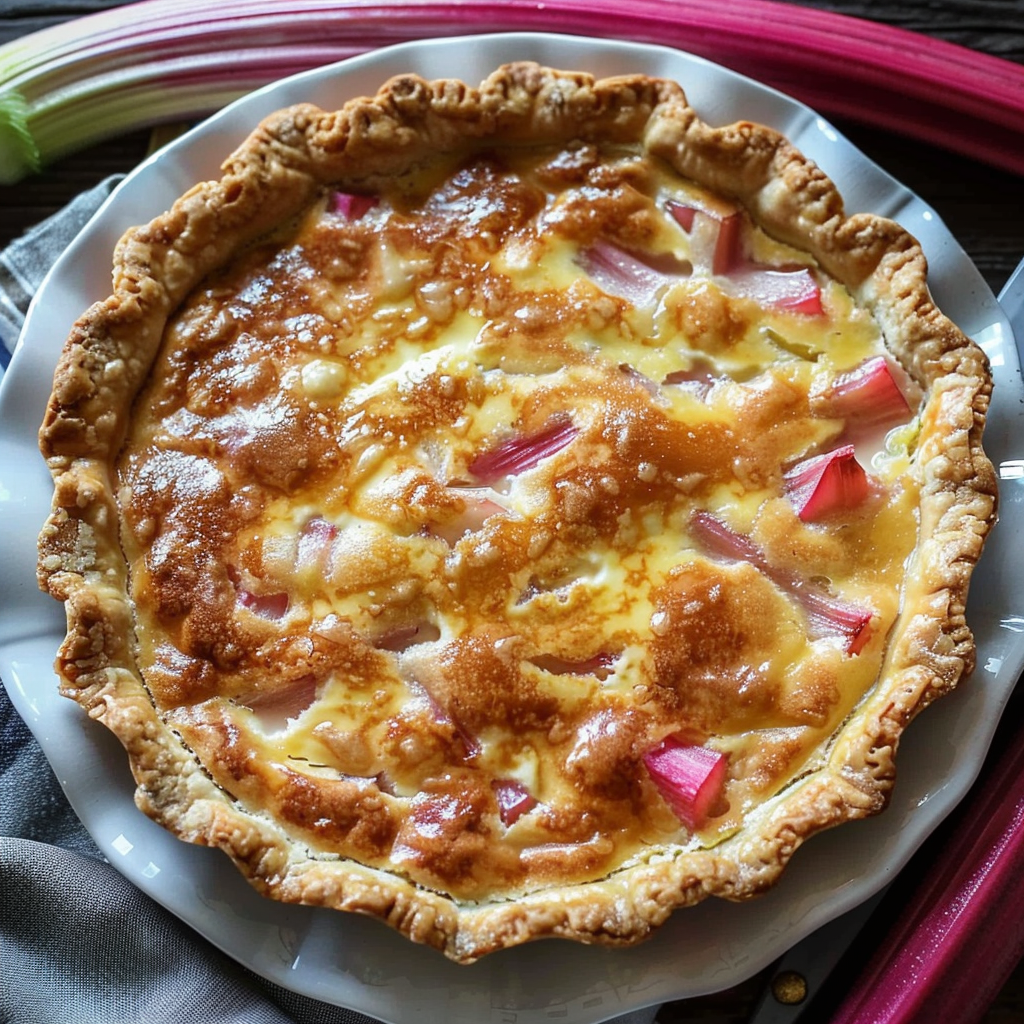
The Science Behind Rhubarb Custard Texture
The magic of this pie lies in how simple ingredients interact. When baked, the mixture of eggs, flour, and milk transforms into a soft-set custard that cradles the tart rhubarb.
-
Eggs act as the primary setting agent. As they cook, they coagulate and trap liquid, giving the pie its structure.
-
Flour slightly thickens the custard and helps form the delicate base. Without it, the pie might become too runny.
-
Rhubarb’s moisture content also impacts the final texture. Fresh rhubarb has a high water content that releases during baking, blending into the custard and softening the overall bite.
-
Cooling time is crucial. It allows the custard to finish setting, preventing it from becoming too loose when sliced.
This process is similar to what’s described on the Wikipedia page for custard, where the balance of egg, dairy, and heat creates a range of textures—from pourable sauces to firm, sliceable pies.
Understanding the science helps avoid common pitfalls like watery fillings or undercooked centers. For tips on achieving perfect texture, Pinterest boards featuring homemade pie techniques offer step-by-step visuals that can guide your bake.
Traditional Rhubarb Pie vs. Crustless Version
While both desserts celebrate rhubarb’s tart flavor, the traditional and crustless versions offer very different baking experiences and results.
Traditional Rhubarb Pie:
-
Requires a buttery pastry crust, often blind-baked for crispness.
-
Filling usually includes rhubarb tossed with sugar, flour or cornstarch for thickening.
-
More time-intensive: requires dough preparation and chilling.
-
Texture: a firm slice with flaky crust and juicy filling.
Crustless Rhubarb Custard Pie:
-
Skips the pastry altogether, reducing prep time.
-
Custard bakes around the rhubarb, forming a soft, pudding-like interior.
-
Forms a delicate base while baking—no rolling or crimping required.
-
Lighter and more delicate, ideal for those seeking a low-effort, comforting dessert.
For more comparisons, the Wikipedia list of pies, tarts, and flans highlights how variations in structure and filling define different styles of pie across cultures.
Ultimately, the crustless version delivers on flavor and ease, making it a perfect entry point for new bakers or a quick fix for rhubarb lovers.
Serving Suggestions for Crustless Rhubarb Pie
Presentation can elevate this humble pie into a show-stopping dessert. Here are simple ways to serve and enjoy it:
-
Chilled or Room Temperature: Chilling allows the custard to firm up, making clean slices easier. Serve it slightly cool for best texture.
-
Toppings:
-
Whipped cream adds a light, airy contrast.
-
A dusting of powdered sugar creates visual appeal.
-
A scoop of vanilla ice cream enhances the creamy notes.
-
-
Pairings:
-
Serve with black tea or light roast coffee for an afternoon treat.
-
Dessert wines like Moscato or Riesling pair well with the sweet-tart profile.
-
These ideas are common across Pinterest spring dessert recipes and make the pie suitable for everything from casual picnics to elegant gatherings.
Make-Ahead and Storage Tips
This pie is as practical as it is delicious. With a few simple guidelines, you can make it ahead and store it for later.
-
Make-Ahead: Bake up to 2 days in advance. The custard holds well and even improves in flavor over time.
-
Storing Leftovers: Cover and refrigerate for up to 4 days. Use an airtight container or wrap tightly with plastic wrap.
-
Freezing: Though best fresh, the pie can be frozen. Cool completely, then wrap tightly in two layers of plastic wrap and foil. Freeze for up to 1 month.
-
Reheating: Thaw overnight in the fridge. Serve cold or warm gently in a 300°F oven for 10–15 minutes.
This ease of storage is another reason the pie ranks among top crustless dessert ideas on Pinterest. It’s as convenient as it is comforting.
Nutritional Snapshot
While indulgent, this pie offers a relatively balanced nutritional profile, especially compared to traditional pies with crust.
-
Calories per slice: Approx. 250–300 (based on 8 servings)
-
Sugar: Around 20–25g per slice
-
Fat: 10–12g, primarily from butter and eggs
-
Protein: 5–6g from eggs and milk
-
Fiber: 1–2g from rhubarb
Rhubarb adds a small amount of vitamin K and antioxidants. For a deeper look into the history and health aspects of similar pies, Wikipedia’s page on chess pie offers a related custard-style comparison.
While it isn’t exactly a low-calorie dessert, it offers wholesome ingredients and no overly processed fillers, making it a reasonable indulgence.
More Rhubarb Desserts to Try
Once you’ve mastered this custard pie, consider branching out into other rhubarb-based treats:
-
Rhubarb Crisp: A baked dessert with a crunchy oat topping.
-
Rhubarb Muffins: Tangy bites perfect for breakfast or snacks.
-
Strawberry Rhubarb Compote: A sauce for topping yogurt, pancakes, or ice cream.
-
Rhubarb Galette: A rustic free-form tart with buttery crust and fruit filling.
You can find inspiration for all of these on Pinterest rhubarb recipe boards, which are filled with seasonal twists and modern takes on traditional favorites.
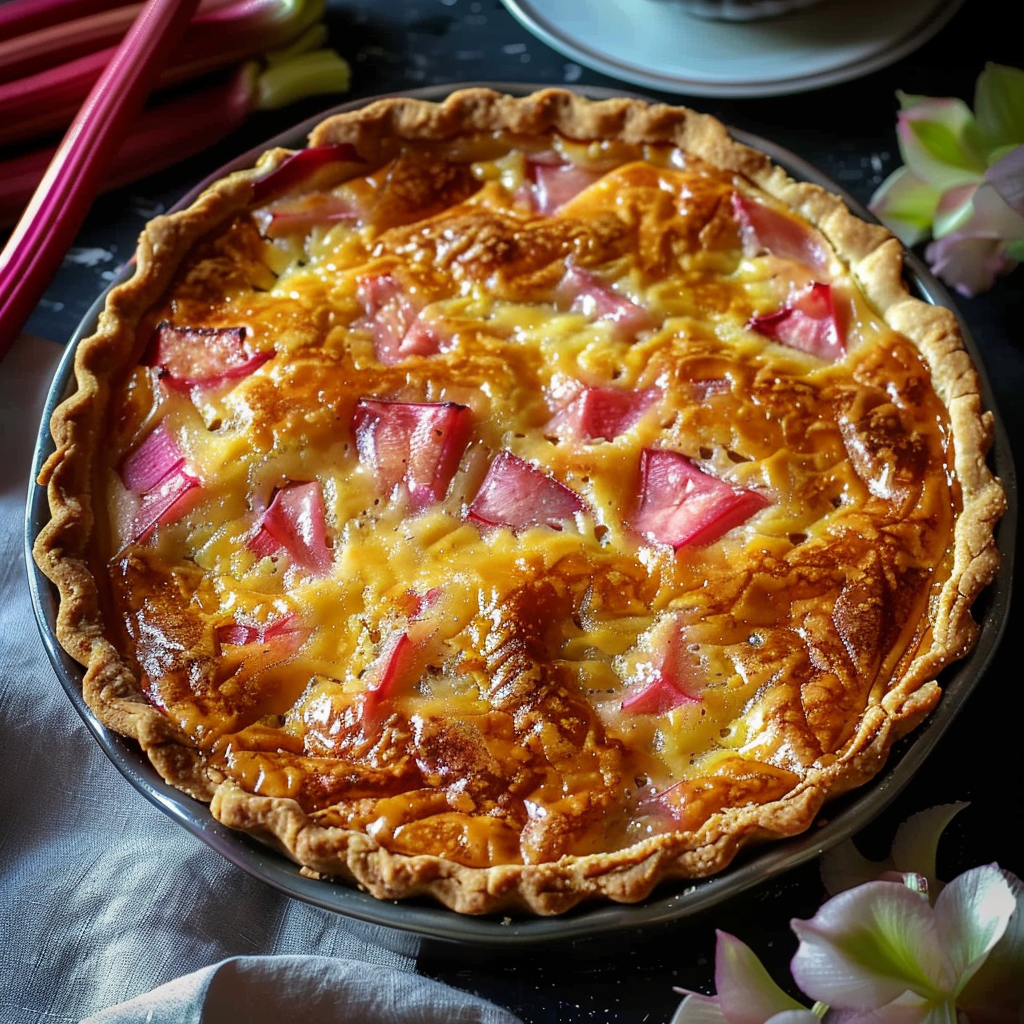
FAQs: People Also Ask
Do you need to peel rhubarb for pie?
No, peeling is not necessary. The skin softens during baking and adds color. Only peel if stalks are very thick or tough.
Can you use frozen rhubarb in this recipe?
Yes. Thaw completely and drain excess liquid before using to prevent a watery custard.
Why is my rhubarb pie watery?
Excess moisture from unthawed frozen rhubarb or underbaking can lead to a watery pie. Make sure to bake fully and cool before slicing.
Can you make this pie ahead of time?
Absolutely. It can be made up to 2 days in advance and stored in the fridge.
How do you thicken rhubarb pie filling?
In custard pies, flour helps thicken the filling. Avoid overloading on fruit and bake until the center is set.
Rhubarb Recipes Guide Custard Pie Recipe and Crustless Rhubarb Pie
This easy crustless rhubarb custard pie combines fresh rhubarb with a silky, lightly sweet custard that forms its own tender crust while baking. With no dough to roll out and minimal prep time, it’s the perfect dessert for spring or summer gatherings. Serve chilled or at room temperature for a comforting, fuss-free treat.
- Author: Clara
Ingredients
- 3 cups chopped fresh rhubarb
- 3 large eggs
- 1 ½ cups granulated sugar
- ¼ cup unsalted butter, melted
- ½ cup all-purpose flour
- ½ teaspoon salt
- 1 teaspoon vanilla extract
- 1 ½ cups milk
Instructions
Preheat your oven to 350°F (175°C) and lightly grease a 9-inch pie dish.
Spread the chopped rhubarb evenly in the bottom of the pie dish.
In a large mixing bowl, whisk together eggs and sugar until smooth. Add melted butter, flour, salt, vanilla extract, and milk. Mix until well combined and smooth.
Pour the custard mixture over the rhubarb in the pie dish.
Bake for 45–50 minutes, or until the center is set and the top is lightly golden.
Allow the pie to cool completely. It will firm up as it cools. Serve chilled or at room temperature.
Notes
-
Be sure to measure the rhubarb after chopping to ensure accuracy.
-
Let the pie cool fully to allow the custard to set properly.
-
You can double the recipe for a 9×13-inch baking dish, but increase bake time by 10–15 minutes.
-
Fresh rhubarb gives the best texture, but frozen works with proper prep.
-
For a flavor boost, add a sprinkle of cinnamon or citrus zest.
